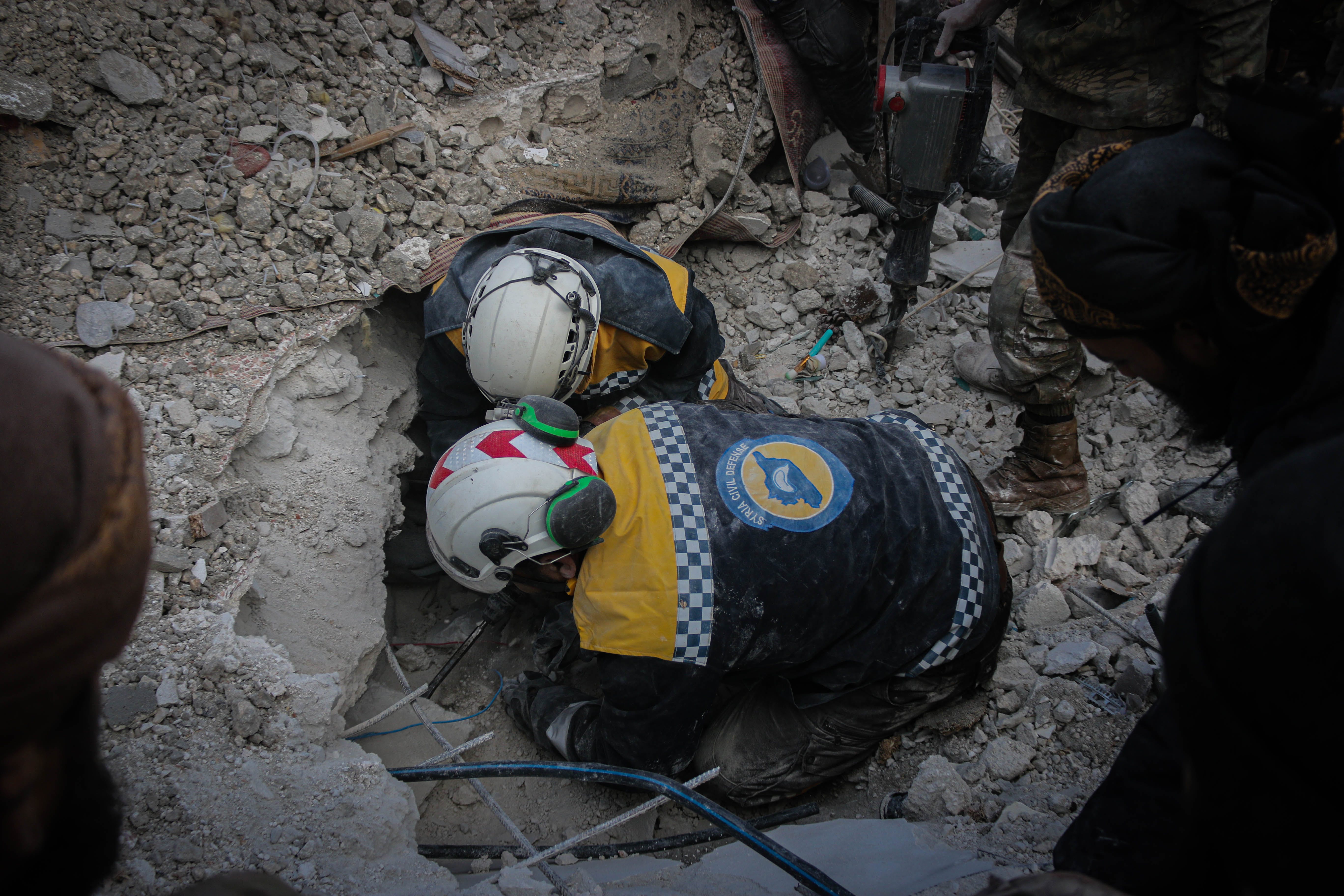Is it the role of international humanitarian aid organisations to prepare communities for and respond to the devastating impacts of climate change?
Is there a space for the humanitarian sector to actively engage in recognising and limiting its own environmental impact?
Should humanitarian actors step up to influence and lead green innovation through their own activities and approaches?
The findings of the most recent Intergovernmental Panel on Climate Change Report paint a bleak picture of the future state of our world if corporations, governments and individuals fail to pull up their socks and act with urgency to slow-down and shape-up policy, consumption, and production. The 2018 Special Report, released last month, ominously details the widespread impact that a permanent global warming of more than 1.5°C above pre-industrial levels (we are at 1°C now and on track to hit the 1.5°C threshold in 11 years) would have on natural and human security. These projected ramifications are more severe, more immediate, and more extensive than previously thought. They include: intensification of drought causing food shortages and displacement; sea level rise forcing migration and saltwater intrusion of fresh water sources; and increased severity of tropical storms and monsoons causing higher, more concentrated rainfall and flooding. As is well known, these impacts will not be distributed equally; not only in terms of geography, but also in relation to the capacity of states, communities, and individuals to respond and adapt.
If we fail to stabilise global warming at or below 1.5°C, humanitarian actors and resources will be more stretched and more needed than ever before. It is clear that international relief organisations are already under the pump in the face of increasingly complex, protracted and widespread humanitarian crises. After the release of the IPCC Special Report, the International Federation of the Red Cross President, Francesco Rocco, captured the essence of the problem: “More than half of our operations are now in direct response to weather-related events, and many others are compounded by climate shocks and stresses. If this is the situation now, then it is difficult to comprehend the scale of crises confronting communities in a world that is 1.5°C or 2.0°C hotter… it will be especially cruel for communities that are already struggling to survive because of conflict, insecurity or poverty”. These weather-related events are not solely limited to natural disaster; anthropogenic-induced changes to weather systems are also a catalyst for displacement, disease, famine, and unrest.
Although the onus is on the most powerful of global actors – big business and governments – to cut emissions and develop new ways of working, unprecedented system transitions will be required with the collective commitment (as well as changes in attitudes and behaviours) of most sectors and individuals. The 2018 IPCC report also establishes that there must also be active facilitation of improved land management and reforestation, recognising the major role vegetation and forests play as carbon sinks. Humanitarian aid organisations at the coalface of the direct and indirect consequences of global warming must also be cognisant and proactive in identifying their own impact upon the environment.
Humanitarian Activities and Environmental Damage
Emergency humanitarian relief is, by its very nature, fast-paced, short-term, reactionary, and focused on meeting basic and immediate needs. This does not leave much room for considerations of environmental footprint or sustainability. OCHA, together with UNEP, has found that humanitarian response clusters have various, significant impacts upon the environment. Improper management of waste, water contamination from sewage disposal, deforestation, soil erosion and biodiversity loss, improper disposal of packaging and construction waste, and unsustainable use of natural resources are just some of the negative environmental outcomes produced from humanitarian activities.
In situations of large-scale crisis and suffering, it may seem aspirational or even entirely inappropriate to consider the damaging effects the provision of humanitarian assistance can have on the environment. As Charles Kelly writes, ‘The midst of a humanitarian crisis may not look like the best time to start trying to hug trees; trying to combine environmental action with humanitarian aid could jeopardise both’. However, ignorance of the environmental impact of their assistance, or hiding behind the protection of altruism, is no longer acceptable in the face of increasingly fragile ecosystems. Moreover, failure to deliver assistance in a way that is conscious of the environment may cause ineffective response outcomes and limit full understanding of an emerging crisis situation.
Local Pakistanis unload supplies from a CH-47 Chinook in Khyber – Pakhtunkhwa, Pakistan, Oct. 13, 2010. The flood has affected nearly 20 million Pakistanis, forcing many from their homes. (U.S. Army photo by Pfc. Joshua Kruger/Released)
What is Already Happening?
But what can be done? The humanitarian sector is well placed to take a leadership role in innovating and facilitating environmentally conscious approaches to delivery of services. In fact, this is already happening! Sustainability is being actively pursued in many refugee and IDP settlements around the world, bringing two of the most pressing global challenges – protracted displacement and environmental well-being – together in a positive way. Many initiatives are also engaging key partners in the private sector. For example, UNHCR is partnering with major reforestation and sustainability partners, such as Land Life, to restore degraded land within and around refugee settlements and promote sustainability in delivery of shelter and food supplies.
Innovative approaches are also being taken in household activities inside refugee settlements. In one Rwandan refugee camp, UNHCR has partnered with a Kigali-based social enterprise to pilot environmentally friendly micro-gasification stoves and cooking practices. This project aims to reduce exposure of women and children to toxic emissions, facilitate job growth, and limit over-dependence on trees for burning. In 2017, a 12.9-megawatt peak solar photovoltaic plant was launched in Jordan’s Za’atari Camp, which is home to approximately 80,000 displaced Syrians. It is estimated that this initiative will result in an annual reduction of 13,000 metric tonnes of CO2 emissions, and save millions of dollars that can be reinvested into other facets of humanitarian assistance provided by UNHCR.
Although efforts to pursue environmentally friendly solutions in humanitarian aid are easier to trial and achieve in settings such as large refugee camps, there are also opportunities in other stages of the humanitarian cycle. For example, improved waste management plans and systems are being introduced by peacekeeping forces, as seen in MINUSCA operations in the Central African Republic. Another example is the Rapid Environmental Assessments (REAs). Although not new, these are a relevant tool utilised in the relief stage of rapidly evolving situations where there is population displacement and also during repatriation/reintegration operations. Consistent application of REAs inform smarter decision-making and improve risk management. This helps to mitigate the environmental impact of a response and at the same time protect vulnerable populations from secondary threats. The Joint UNEP/OCHA Environment Unit has investigated other areas of the humanitarian system that could be improved and has provided recommendations on mainstreaming environmentally conscious programming. The Unit has produced analysis on case studies such as Nepal, Haiti and Afghanistan.
Looking to the Future
IPCC report findings urge corporations, governments and individuals to actively participate in fast and comprehensive action to protect the environment. The humanitarian sector does have a role to play in slowing rates of environmental harm. Refugee camps could be an ideal setting to trial new environmentally friendly approaches, including initiatives focused on reforestation and regeneration of degraded land. The humanitarian sector could be a leading voice in promotion of ‘green’ ideas, introducing best practices in relief activities and influencing wider engagement with communities and governments. This also includes greater partnership with the private sector to enhance impact.
Humanitarian organisations are often first responders to the widespread impact that irresponsible levels of production and consumption have on human security. Certainly, there are limitations to installing environmentally conscious measures in an already stretched humanitarian system. Clean and green may not be a priority and difficult to implement in large scale emergencies. However, developing and integrating new approaches to planning, design, implementation, and management of humanitarian response can result in significantly less burden being placed on the environment over time. Climate change prevention is critical in the next decade, and greater environmental accountability from humanitarian actors can make a positive contribution to global efforts to stabilise permanent warming of our world at 1.5°C, or below.
Cover image: Thousands Displaced Due to Flooding in Cap-Haïtien, Haiti. UN Photo/Logan Abassi.







